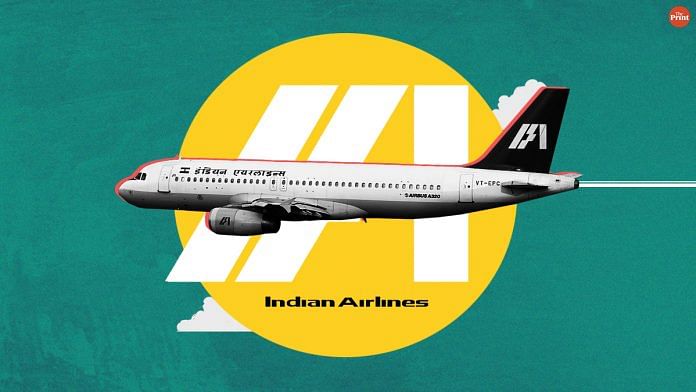At a time when corporate India is still struggling to increase women’s participation at the workplace and looking at ways to break the glass ceiling, a public sector enterprise was one of the early pioneers.
Indian Airlines, the erstwhile prestigious national carrier, recruited Durba Banerjee as its pilot within few years of its inception in 1953.
Eight domestic airlines that flew before and right after Independence were merged to form the new domestic national airline – the Indian Airlines Corporation. This is how Indian Airlines got its wings. As Indian Airlines flew domestic, Air India operated on international routes.
Also read: Govt keeping Air India artificially alive could end up killing Jet Airways
For many Indians – especially those born before the 1990s – Indian Airlines with its orange-coloured logo was the only option to fly. It was synonymous to flying for at least three generations of post-Independence Indians.
This was a time when there were no choices for an air traveller in India. The airports looked dull and uneventful, and the Indian Airlines was the only way to reach far-flung corners. And, the connections weren’t always convenient, not to mention chronic delays and unexciting food. But it was a brand Indians were close to because it was regarded as a national asset.
“It was a brand that connected India, and in pre-liberalisation days, much of the travelling was domestic with very little overseas travel. Therefore, Indian Airlines was the only option,” brand historian Santosh Desai said.
The Indian Airlines had a successful run till the skies were opened up for the private sector. After other players entered the fray, Indian Airlines lost its monopoly and market share. However, unlike many other government-owned enterprises, it continued to be profitable.
Also read: Not just Air India, Shah Rukh Khan is de facto cheerleader of lost causes
“Indian Airlines ruled the hearts and minds of Indians. It was absolutely the gold standard,” brand guru Harish Bijoor said. “For executives and families, it was a premium way to travel, especially in the 1960s, 1970s and 1980s,” he added.
Indian Airlines’ problems began when its wholly owned subsidiary Alliance Air started operations in 1996, say aviation experts. Alliance Air was brought in to enhance regional connectivity but started eating into Indian Airlines’ routes. “People started associating Indian Airlines with Alliance and somehow the brand value of the former started getting diluted,” Bijoor pointed out.
The Indian skies were also opened up to many other domestic airlines such as Damania, Modiluft, and later Kingfisher. These airlines started offering value-added services, bringing in a bit of fun factor to air travel, which the staid, officious Indian Airlines lacked.
In fact, Damania started serving in-flight alcohol. Another private airline even conducted a fashion show on air with models walking up and down the aisle. The passengers enjoyed, but the authorities frowned upon it.
“While all these airlines had their time and died, they dented Indian Airlines’ operations in a manner that it became difficult for the carrier to bounce back,” Bijoor added.
Also read: Air India gets ₹1000 cr from Small Savings Fund: Wasting public money or last-minute push?
In 2005, the airline tried to re-invent itself and got a brand makeover with a new name and logo. On 7 December 2005, Indian Airlines was rechristened “Indian”. The move was expected to boost the airline’s image and give it a new and younger look, which could take on the competition.
However, in yet another uncalled-for decision, former civil aviation minister Praful Patel decided to merge Indian Airlines with Air India in 2007. Not only did the decision kill the domestic airline brand, it ultimately affected Air India’s operations too. The merger among other things saddled Air India with over 30,000 employees, leading to multiple human resource problems.




My most valued perk as a management trainee in Delhi were official visits to Calcuuta, when I could meet my fiancée. Indian Airlines had inducted the A 300s. Early morning would show the magnificent sight of the rising sun light up the snow clad peaks of the Himalayas.